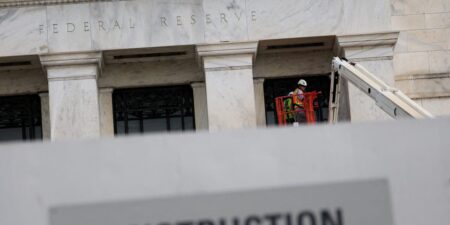S&P led the U.S. bond credit downgrades in 2011. When Fitch downgraded U.S. bonds to AA+ in 2023, I wrote that the real news was Moody’s ratings were still Aaa. Finally last week, Moody’s downgraded the U.S. sovereign credit rating from Aaa to Aa1 citing years-long fiscal weakening and a materially higher interest burden than other Aaa sovereigns carry.
These rating actions do not change the paramount position of the dollar in international trade: the U.S. country ceiling remains Aaa/AAA by all three SEC-regulated rating agencies. The U.S. still remains the world’s largest economy. But lower ratings could have an impact on what the U.S. government pays for its debt.
Moody’s also revised its U.S. sovereign credit outlook from negative to stable, based on two structural positives: the Fed (“a very effective monetary policy led by an independent Federal Reserve”) and the Constitution (“constitutional separation of powers among the three branches of government”). In the Financial Times, I said the credit downgrade was “a long time in coming” and “a dire warning.” What makes it dire is the extent to which Moody’s Aa1 opinion relies on something so foundational as the integrity of the U.S. political structure and monetary system.
But the market, not Moody’s, has the final say on pricing. The direction of prices on U.S. Treasuries going forward remains uncertain, but here are some key perspectives:
Credit Downgrade Risk: Moody’s Vs. The Market
If you believe the past is the best guide to the future, Moody’s bond default studies tell us, on idealized basis, the default rates of 10-year Aaa corporates are 1/100th of one percent (one basis point) and 10 times lower than idealized default rates for 10-year Aa1 bonds (10 basis points). To understand how small this probability is, the likelihood of dying by a bolt of lightening is 1000 and 100 times higher, respectively.
But Moody’s Sovereign Issuers – 10-Year Transition and Default Rates report, which shows real historical trends in government credit downgrades and upgrades, provides a different view. From year-ends 2013 to 2023, Moody’s reported four small or medium-sized Aa1-rated sovereigns of 125 in total. None remained Aa1 or were upgraded to Aaa. One dropped a notch, to Aa2, the other three notches, to Aa3. In short, Aa1 rated sovereigns are subject to credit downgrade risk.
Nevertheless, considering that the U.S. is the world’s largest economy with the world’s highest national debt, this may be an apples-to-watermelons comparison.
An Extrapolation Using Moody’s Sovereign Method
The analysis of Financial Times’s Toby Nangle paints a more contradictory picture. Using the Congressional Budget Office’s Budget and Economic Outlook: 2025 to 2035 and Moody’s projections, he reverse-engineered four key ratios under the category of Fiscal Strength, a variable in Moody’s ratings scorecard.
Given General Government Debt (GGD) as a measure of debt burden and General Government Interest Payments (GGI) as a measure of debt affordability. Nangle found that GGD-to-GDP, associated with a B3 rating, will slip two notches, to Caa2, while GGD-to-Revenue, at Caa3, will slip a notch and hit the bottom of Moody’s scale, at Ca. GGI-to-Interest Payments, B2, will slip to B3 or below. GGI-to-GDP, Ba1, will drop three notches to B1 or below.
Caveat that these are not official results. They are third-party experimental results applied to inputs, not ratings. But after feeding these input levels back into the Moody’s 10-year sovereign downgrade and default study highlighted above, further credit downgrades appear much more likely than upgrades. And default rates associated with these sovereign credit rating levels have historically been 30% or higher.
The 10 Trillion Dollar Question: What Will Happen To Rates In 2025?
A recent publication by Canadian private lender First National Financial LP says over USD 9 Trillion in U.S. Treasuries will mature this year, with 55-60% coming due before July. That is less than 45 days from now. With CBO projections of USD 1.9 Trillion due in 2025, the total liability will exceed USD 10 Trillion. The U.S. will need to roll it over in full or pay down part of the balance.
Does the market have the capacity to absorb so much U.S. debt all at once? Who will buy it? Foreign investors already own 30% of U.S. Treasuries: will they come back for more? The U.S. 10-Year Treasury has pierced the 5% level and remains elevated. Yields on overseas governments with large economies are rising too. How much do yields need to rise for the debt to be rolled over in full? How much would deterioration in debt affordability further impact credit downgrade risk?
For decades, US bonds represented the baseline cost of capital, like a generic: not no-frills, but no-risk. The risk-free rate being a necessary component of basic financial theory, its proxy has been USD yield or swap curves for 50 years. To form bond prices, investors often start with U.S. rates as the risk-free term, then add terms to reflect inflation, credit risk and liquidity factors.
On this basis, some investors may still see the U.S. as essentially Aaa and be attracted to the yield pickup. But others are likely to want to observe how high rates rise before investing. If rates rise too high, too fast, the rise in burden and fall in affordability may cause the market to pull back, exacerbating credit downgrade risk.
Why The Tax Bill Adds Complexity
One way for the U.S. to address its debt problem would be to begin to pay down its liabilities. But yesterday, the House broke impasse on the tax and immigration overhaul package, sending it on the Senate. The “Big Beautiful Bill” would cut Federal tax revenues by as much as USD 4.1 Trillion over the next decade.
Supporters have also projected that the tax cuts will stimulate economic growth, paring the loss of tax dollars to USD 3.3 Trillion. In some scenarios, the interplay of changing immigration and automation patterns on labor and energy markets in the next ten years as a result of this legislation could turn out to be economic positives. Ratings could stabilize avoiding further credit downgrade risk.
But that is still USD 3.3 Trillion less in tax collections available for debt repayment, which represents one-third of the total amount of liabilities coming due in 2025. The current level of uncertainty is part and parcel of stock market investing, but it is the antithesis of what credit investors seek.
Read the full article here
















